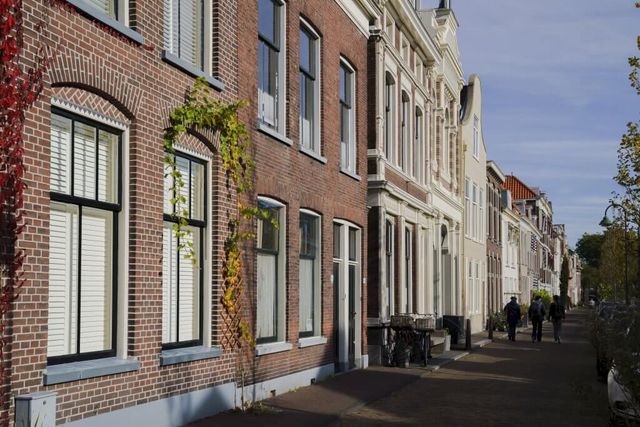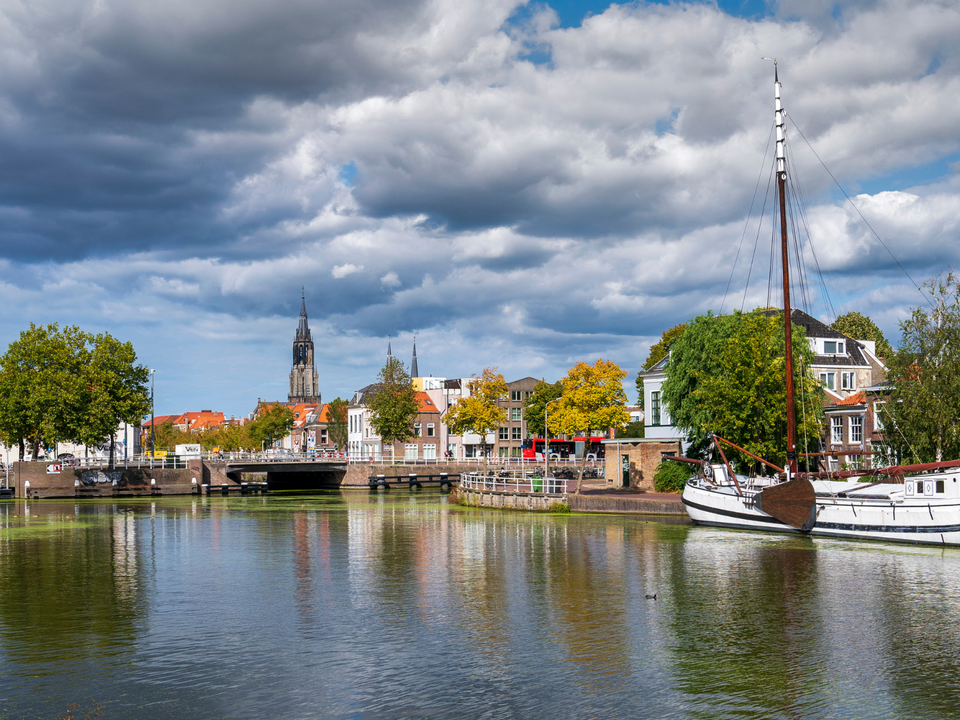The most famous Delft girl is, of course, the Girl with a Pearl Earring by the Delft Dutch Master Johannes Vermeer (1632-1675). The 17th-century master of light lived and worked in Delft for his entire life. Of the estimated 45 paintings he executed, 37 are exhibited in museums around the world.
Vermeer may well be one of the most enigmatic painters of all time. His technique and the colours he used in paintings never cease to be a source of fascination and inspiration. In Delft, you can explore and experience the city he called home.
Experience the city of the master painter
In Delft, you can easily walk into a painting by Johannes Vermeer. The historic centre, the Oude and Nieuwe Kerk, the canals and mansions take you back to the 17th century and make the past come to life. During a walk through Delft, you will experience the city like the master painter himself.
Go back in time and discover the places associated with Vermeer, like his birthplace, the location from which he painted his famous work View of Delft or the Guild of Saint Luke where he gathered at that time.

1. View of Delft
Hooikade
The painting View of Delft by Vermeer is the most famous city view from the Dutch 17th century. It shows a view from an upper house on the Hooikade to the harbour on the south side. The technique between light and shadow, the impressive cloudy sky and the subtle reflections on the water make this painting an absolute masterpiece!
You can still see the view in real life. The exact location where Vermeer painted the View of Delft can be found at the Hooikade in Delft. It is only a 10-minute walk from the centre.
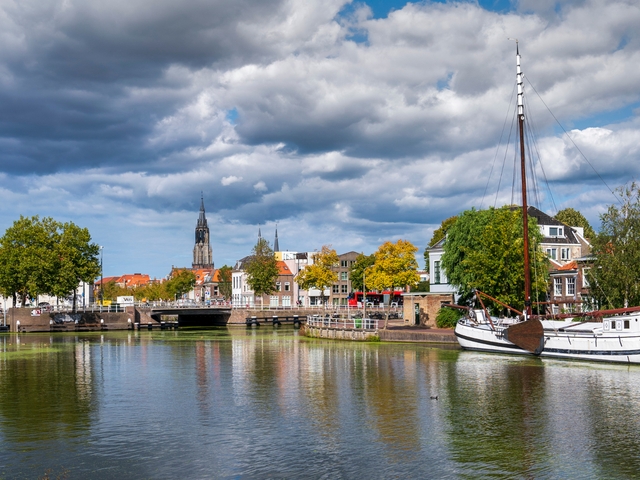
2. Oude Kerk
HH Geestkerkhof 25
In the second week of December 1675, Johannes Vermeer died after an illness of one and a half days. He had eight children at home at the time. On December 15, 1675, his funeral was registered in the burial register of the Oude Kerk in Delft. His mother-in-law had her own grave here, in which several of Vermeer's children were also buried.
Vermeer was buried in the family grave in the Oude Kerk, but the grave was cleared in the 19th century. When his work became known in the 19th and 20th centuries, the church received many visitors looking for his grave. In 1975, a small gravestone was placed for Vermeer. In 2007, a mausoleum was placed for him in the Oude Kerk in honour of the three-hundredth anniversary of his death.
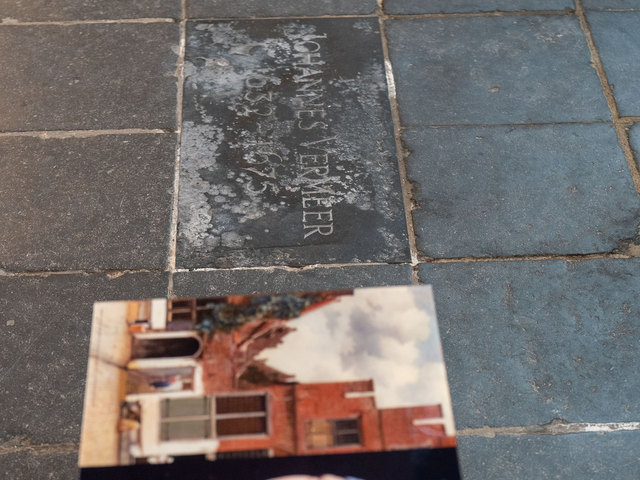
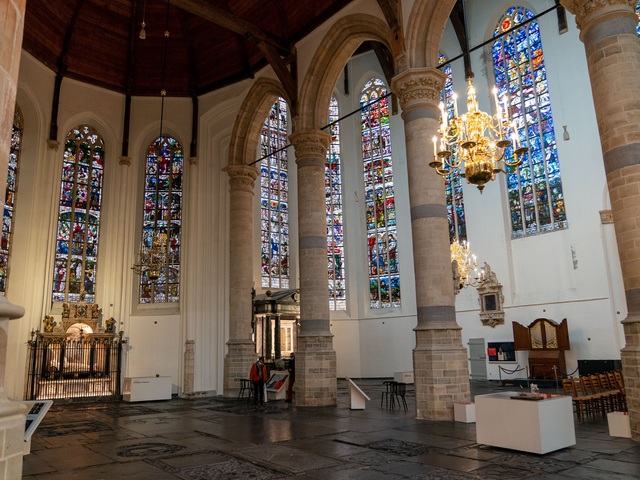

3. Vermeer Centrum Delft
Voldersgracht 21
In the 17th and 18th centuries, the Guild of Saint Luke was located at Voldersgracht 21, of which Vermeer, following his father, became a member in 1653. Painters, draft painters, glaziers, sculptors, engravers, but also pottery makers, book printers and art dealers could become members of the guild. Nowadays you will find the Vermeer Center Delft here. This is the only place in the world where you can see Vermeer's complete oeuvre. You feel like you are back in the 17th century; get to know his paintings, life, family and techniques.
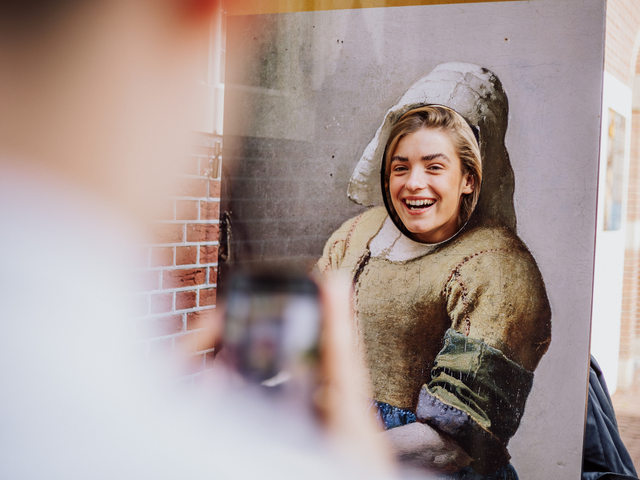
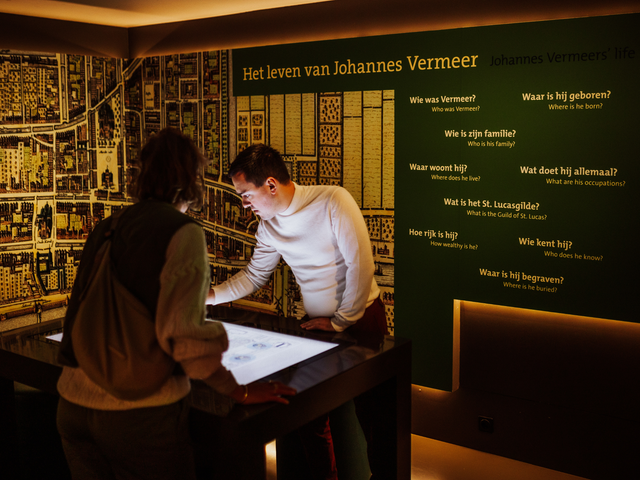
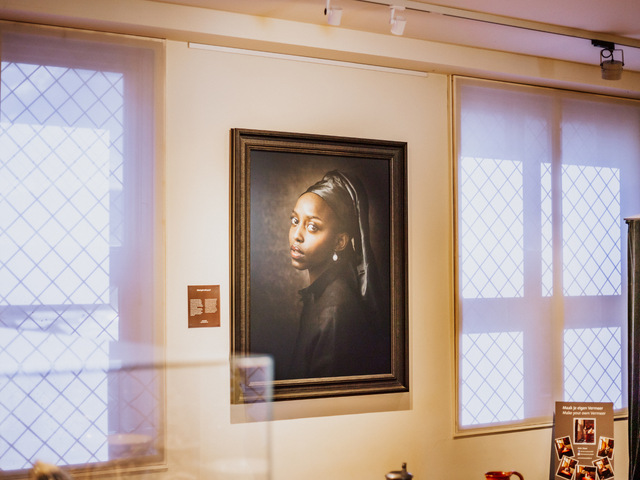
4. Oostpoort
Oostpoort 1
People all over the world know the Rotterdamsepoort, even though it has been gone for almost two centuries. It is prominently featured in the painting View of Delft. With its two turrets, the gate resembled the Oostpoort, the only Delft city gate that still exists. Walk past the beautiful Oostpoort that takes you back to the time of Vermeer.
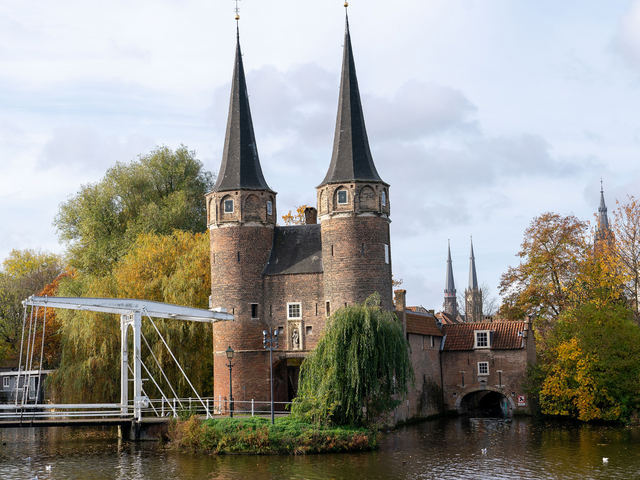
5. The Little Street
Vlamingstraat
There are multiple theories about the exact location of The Little Street. In November 2015, art historian Frans Grijzenhout stated that the building on Vlamingstraat in Delft must be the location in the painting. The area in which Vlamingstraat was located at the time was a middle-class district where people lived with small salaries, such as butchers and carpenters. The house in the famous painting was lived in by an aunt of Johannes Vermeer.
Please note that Vlamingstraat is a residential area. We request you, do not block the sidewalk and road, do not stand still for long periods and respect the privacy of the residents.
